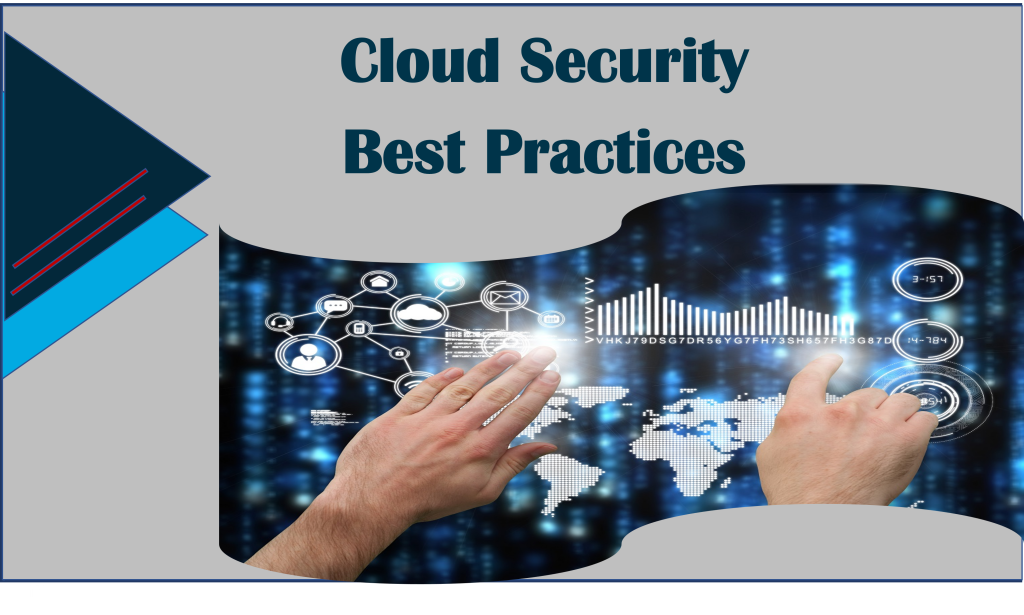Introduction
In the digital era, businesses of all sizes are rapidly moving their operations to the cloud. The benefits of cloud computing are numerous — scalability, flexibility, cost-effectiveness, and more. However, along with these advantages, come various security risks. Understanding and implementing robust cloud security practices are crucial for businesses to protect their data and ensure continuity. This article will discuss cloud security best practices and illustrate them with a case study.
Understanding Cloud Security
Cloud security involves protecting your data, applications, and infrastructures involved in cloud computing. A robust cloud security strategy should address all facets of security in the cloud environment, including access control, data privacy, compliance, and incident response.
Cloud Security Best Practices

1. Understand Your Shared Responsibility Model
Cloud service providers (CSPs) operate on a shared responsibility model. The CSP is responsible for securing the underlying infrastructure of the cloud, including hardware, software, networking, and facilities. Conversely, the customer is responsible for protecting their data, identity, access management, and device configuration.
For instance, if you’re using Amazon Web Services (AWS), Amazon is responsible for the security ‘of’ the cloud, while you’re responsible for the security ‘in’ the cloud. Understanding this model is crucial to ensuring comprehensive security.
2. Implement Strong Access Control
Implementing strong access controls is one of the most crucial steps in securing your cloud environment. This includes managing who has access to your cloud resources and what level of access they should have. A principle known as the “Least Privilege” should be used, which means giving a user only those privileges which are essential to perform his/her duties.
3. Encrypt Your Data
Encryption is a key tool in protecting your data in the cloud. It should be applied in transit (as it moves across the internet) and at rest (when stored in the cloud). Most CSPs offer encryption services that can be applied with just a few clicks.
4. Regularly Backup Your Data
Even in the cloud, data loss can occur. Regular backups are crucial in ensuring that you can recover your data if it is lost, corrupted, or accidentally deleted.
5. Use Multi-Factor Authentication (MFA)
MFA adds an extra layer of security by requiring users to provide two or more verification factors to gain access to a resource. It combines something you know (password), something you have (smartphone to receive a code), and something you are (biometrics).
6. Regularly Review and Update Your Security Policies and Procedures
Security policies should be dynamic and regularly updated as new threats emerge, technology changes, and your business grows. Regular audits of your security policies and procedures are vital in maintaining a secure cloud environment.
7. Ensure Compliance with Relevant Regulations
Depending on your industry and the nature of your data, you may be subject to certain regulations like GDPR, HIPAA, or CCPA. It’s crucial to ensure that your use of cloud services complies with these regulations.
Case Study: Improved Cloud Security in a Healthcare Company
Let’s look at a real-life example – MediHealth, a mid-sized healthcare company. They moved their patient records and data analytics to the cloud but experienced a minor data breach due to an unsecured storage bucket in their CSP.
To respond to this issue, MediHealth took several steps to strengthen their cloud security. They reviewed their shared responsibility model with the CSP and identified areas where they had missed their duties. They implemented stricter access controls, ensuring that only authorized personnel had access to sensitive data.
Next, they enforced encryption for all their data, both at rest and in transit. They set up regular automated backups and started using multi-factor authentication for all their users
To ensure compliance with HIPAA, they took extra measures, including setting up a logging and monitoring system to keep track of data access and manipulation. They also scheduled regular security audits and updated their security policies accordingly.
Within a year of these changes, MediHealth significantly improved its cloud security posture. They experienced no further breaches, and their regular audits showed a high level of compliance with their security policies.
Conclusion
Cloud security is an ongoing commitment that requires a strong strategy, constant monitoring, and proactive measures. By understanding your shared responsibilities with your cloud service provider, implementing strong access controls and encryption, regularly backing up your data, using multi-factor authentication, and maintaining compliance with relevant regulations, you can significantly enhance your cloud security posture and protect your vital business data.
References
- Amazon Web Services – AWS Shared Responsibility Model.
- Google Cloud – Identity and Access Management.
- Microsoft Azure – Backup and recovery.
- National Institute of Standards and Technology (NIST) – Cloud Computing Security.
- IBM Security – Cloud Security Guidance.
- The Health Insurance Portability and Accountability Act of 1996 (HIPAA) – Security Rule.
- European Union’s General Data Protection Regulation (GDPR) – GDPR Compliance.

